The Year Without a Summer 2
"It's completely organic bro"
(This post is too long for e-mail Substack is warning me, so in case of error, read in the website)
This is actually one of the biggest issues nobody is talking about, and the ones that are doing it, are subverting it’s impact to push their Green Agenda. Back when we came up with the Reverse AIDS hypothesis, both me and a friend hit a brick wall of some sorts, lack of consistent amounts of data and paper to actually pin and it and prove it. Plus I was burnt out.
And suddenly, La Palma erupted. For whatever unknown reason, my gut instinct told me to pay attention and I simply decided to do what I do. Analyze the trend, research, come up with my own models, and try to map down the possible collateral damage and systemic effect. Shortly after, said friend introduce me to The Year Without Summer.
I left out the more complex parts and very old papers. In the months and years to come, even if other volcanos didn’t erupt, this will have massive, systemic effects, and any person who works within Intel, or any form of policy-driven job should be aware of it and PREPARE.
The thread below is a funny read of some sort.
In 2021 these are the volcanos that erupt.
Kilauea La Palma Pavlof Ulawun Krakatau Great Sitkin Telica Semisopochnoi
First, we need to establish the effects of volcanic eruptions and climate change, among other variables.
As per VOLCANIC ERUPTIONS AND CLIMATE
“Volcanic eruptions are an important natural cause of climate change on many timescales”
Models that are needed to study anthropogenic effects. Large volcanic eruptions inject sulfur gases into the strato- sphere, which convert to sulfate aerosols with an e-fold- ing residence time of about 1 year. Large ash particles fall out much quicker. The radiative and chemical effects of this aerosol cloud produce responses in the climate system. By scattering some solar radiation back to space, the aerosols cool the surface, but by absorbing both solar and terrestrial radiation, the aerosol layer heats the stratosphere. For a tropical eruption this heating is larger in the tropics than in the high latitudes, producing an enhanced pole-to-equator temperature gradient, es- pecially in winter. In the Northern Hemisphere winter this enhanced gradient produces a stronger polar vortex, and this stronger jet stream produces a characteristic stationary wave pattern of tropospheric circulation, re- sulting in winter warming of Northern Hemisphere con- tinents. This indirect advective effect on temperature is stronger than the radiative cooling effect that dominates at lower latitudes and in the summer. The volcanic aerosols also serve as surfaces for heterogeneous chem- ical reactions that destroy stratospheric ozone, which lowers ultraviolet absorption and reduces the radiative heating in the lower stratosphere, but the net effect is still heating. Because this chemical effect depends on the presence of anthropogenic chlorine, it has only become important in recent decades. For a few days after an eruption the amplitude of the diurnal cycle of surface air temperature is reduced under the cloud. On a much longer timescale, volcanic effects played a large role in interdecadal climate change of the Little Ice Age.
Volcanic Influence on European Summer Precipitation through Monsoons: PossibleCause for ‘‘Years without Summer”
In this study, we have addressed the regional precipitation effects of tropical volcanic eruptions in the Asian and African monsoon regions and in Europe in boreal
summer. We found a weakening of the monsoons, but an increase in European summer precipitation in re-constructions and a climate model. The model provides
evidence that the wet European summers are linked to the weakened African monsoon via changes in the Hadley cell.
Understanding the variability of monsoon rains as well as their predictability is important as large parts of the world’s food security depend on this climatic feature. Hence, a better understanding of the relation between monsoon and stratospheric aerosols is not only relevant for preparing for future volcanic eruptions but
potentially also for the evaluation of climate engineering options. Our results indicate that the influence of stratospheric volcanic aerosols on the monsoon
system, through triggering continental-scale circulation
feedbacks, has distinct effects on regional precipitation. The suggested mechanism is also able to explain the wet conditions in Europe during the ‘‘year without a summer’’ of 1816 and arguably similar past volcanic episodes as a consequence of altered monsoons.
Wood, Gillen D’Arcy. “1816, The Year without a Summer.” BRANCH: Britain, Representation and Nineteenth-Century History. Ed. Dino Franco Felluga. Extension of Romanticism and Victorianism on the Net
The bad weather of the summer months in 1816 is a touchstone of Mary Shelley’s correspondence. In a letter to her half-sister Fanny Imlay, written on her arrival in Geneva, Mary describes—in hair-raising language that would soon find its way into Frankenstein—their ascent of the
Alps “amidst a violent storm of wind and rain” (Letters 1:17). The cold was “excessive” and the villagers they met complained of the lateness of the spring. On their alpine descent days later, an unseasonal snowstorm ruined their view of Geneva and its famous lake. In her reply, Fanny expresses her sympathy for Mary’s bad luck, reporting that it was “dreadfully dreary and rainy” in England, too, and very cold. (Kingston Stocking 1:48)
In 1816-17, the scale of human suffering in
Switzerland was among the worst in Europe. 130 days of rain between April and September 1816 swelled the waters of Lake Geneva, flooding the city, while in the mountains the snow refused to melt (Post 21). When the crops failed, thousands died of starvation during continental Europe’s last ever famine, while the numbers of indigent homeless ran into the hundreds of thousands. Mortality in 1817 was over 50% higher than its already elevated rate in the war year 1815. Everywhere, desperate villagers resorted to a pitiful famine diet of “the most loathsome and unnatural foods—carcasses of dead animals, cattle fodder, leaves of nettles, swine food. . . .” (Post 128).
Widespread stress on food supplies sparked waves of violent social protest across the continent. Riots broke out in the East Anglian counties in England, home of the painter John Constable, as early as May 1816. Armed laborers bearing flags with the slogan “Bread or Blood” marched on the cathedral town of Ely, held its magistrates hostage, and fought a pitched battle against the militia. Constable, a Tory, was scandalized, and his idealized visions of both rural weather and rural labor in his 1816 paintings “The Wheatfield” and “ Flatford Mill, ” when viewed through a Tamboran lens, appear as the pictorial manifesto of an embattled conservative. In March 1817, more than 10,000 demonstrated in Manchester, while in June, the so-called “Pentrich Revolution” involved plans to invade and occupy the city of Nottingham. The army was called in to quell similar disturbances in Scotland and Wales. In the face of this wave of crime and insurrection, provincial jails filled to overflowing across the kingdom. Scores of rioters were subsequently hanged or transported.
In France, the authorities concentrated on maintaining the affordability of bread in the capital Paris, the seat of revolution a mere few decades before. The unrest was correspondingly serious in the neglected provinces, with chronic rioting in the market towns and entire regions on the tipping point of anarchy. According to John Post, an economic historian of the Tambora period, the experience of sustained food shortages and subsequent social instability spurred governments to the authoritarian, rightward shift we associate with the political landscape of post-Napoleonic Europe (165). Fear of agricultural shortfall also motivated political leaders to adopt protectionist policies. It is in the Tambora period that tariffs and trade walls first emerged as standard features of the European and transatlantic economic system.
In a similar vein, it is important to remember that the misery of the Tambora period in Europe—years of famine, disease, and homelessness—was borne overwhelmingly by the poor, who left scant record of their sufferings. For most of those belonging to the middle and upper classes—including the Shelleys and their circle—the social and economic upheaval of those years presented only minor inconveniences.
Below just some examples of erratic weather.
Search for diaries of the bourgeoisie and elites back in the years without summer, especially months before, and you will find a consistent trend of erratic weather.
I am not arguing that the Tonga eruption will replicate the YWAS, my argument is, that these volcanos spewing Sulfur Dioxide, La Palma for months, other volcanos for weeks, and Tonga all at once will add to the fire of massive shifts in weather patterns. I also said, back in the La Palma days, that this was a trend, of volcanic explosions affecting and shifting climate faster than man can. The first lockdown already cemented the trend. Back then I wasn~t aware of YWAS.
If you follow any of my Daily Briefings and Everything… posts you are well aware crops have been taking a hit for the last year. Russian and Canadian wheat, Brazillian corn, the list goes on, and this year we got a nice intensifying fertilizer shortage. Why should you care?
Sulfur Dioxide, especially from volcanic activity has a severe impact and its harmful to crops, and with less fertilizer, yields at some countries will take a surprising nose dive. Do you know what else SO2 affects?
Sulfur dioxide causes a range of harmful effects on the lungs, as the EPA's most recent review of the science concluded:
Wheezing, shortness of breath and chest tightness and other problems, especially during exercise or physical activity.
Continued exposure at high levels increases respiratory symptoms and reduces the ability of the lungs to function.
Short exposures to peak levels of SO2 in the air can make it difficult for people with asthma to breathe when they are active outdoors.
Rapid breathing during exercise helps SO2 reach the lower respiratory tract, as does breathing through the mouth.
Increased risk of hospital admissions or emergency room visits, especially among children, older adults and people with asthma.1
Sulfur Dioxide Contributes to the Cardiac and Mitochondrial Dysfunction in Rats
Epidemiological studies have demonstrated an association between sulfur dioxide (SO2) and an increase in morbidity and mortality of cardiovascular diseases, such as ischemic heart disease, heart failure, and arrhythmia. The mitochondrion is the most sensitive organelle in the myocardium of animals exposed to SO2.2
Just for laughs though. Also, I am so happy there isn’t a pandemic going on, nor vaccination efforts that *check notes.
Causes heart inflammation and attacks your lungs.
Merck to Acquire Acceleron
Pharmaceutical giant Merck is acquiring Acceleron Pharma, which is testing a potentially new add-on treatment for pulmonary arterial hypertension (PAH). The $11.5 billion deal is expected to close by year-end.3
Pfizer is Buying a Cardiovascular Biopharma Company for $6.7Bn
Pfizer is about to buy Arena Pharmaceuticals for $6.7 billion. The arena is a biopharmaceutical company focused in part on cardiovascular and inflammatory medicines for a global patient cohort. A majority of mainstream news outlets have focused their reportage on Arena’s bowel disease treatment while failing to mention the firm’s cardiovascular research.4
If you enjoy or take value from independent interdisciplinary analysis, consider becoming a free or paying subscriber, shifting to doing it full time and with higher quality. Appreciate all supporters.
https://www.lung.org/clean-air/outdoors/what-makes-air-unhealthy/sulfur-dioxide
https://academic.oup.com/toxsci/article/151/2/334/2241016
https://phassociation.org/merck-to-acquire-acceleron/
https://thenationalpulse.com/2021/12/20/pfizer-is-buying-a-cardiovascular-biopharma-company-for-6-7bn/




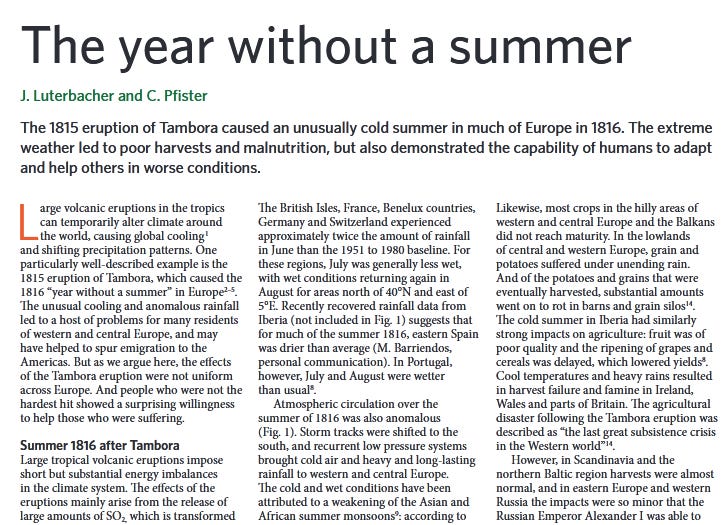





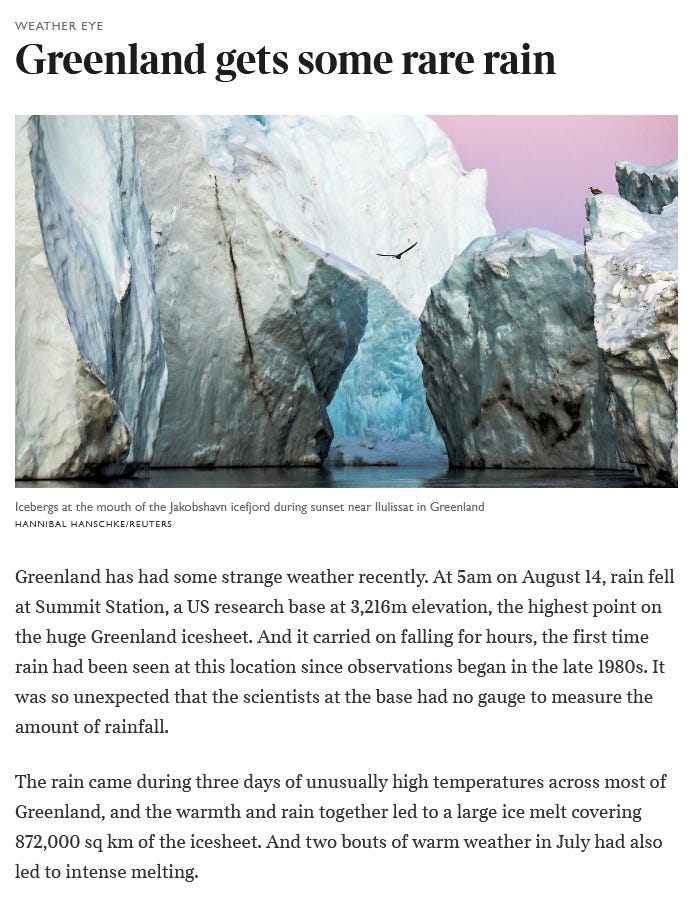

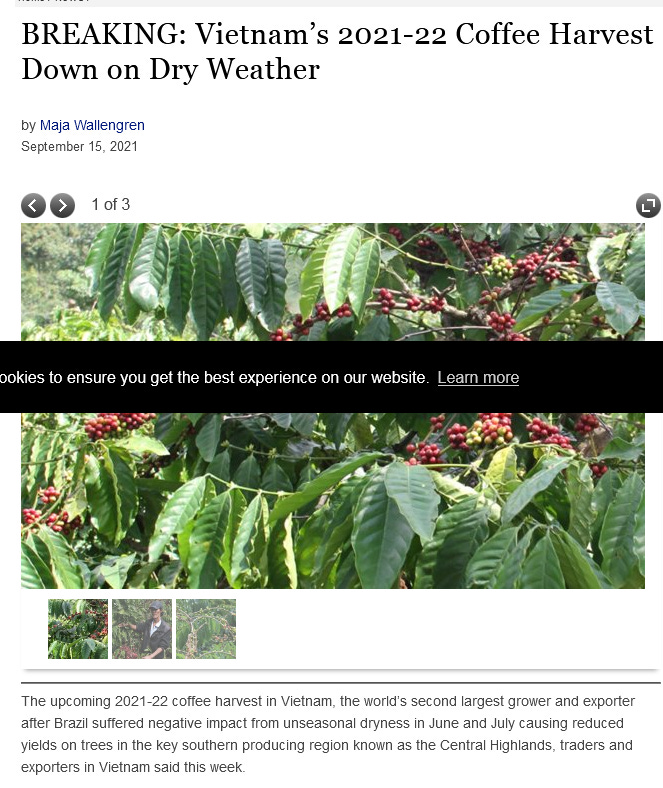
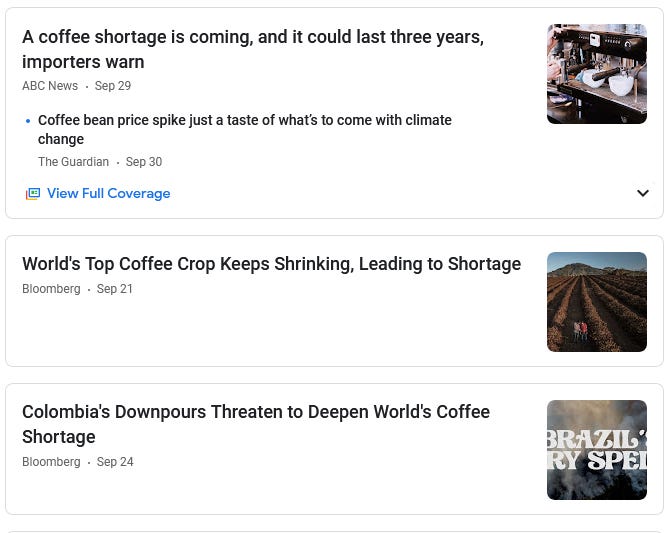
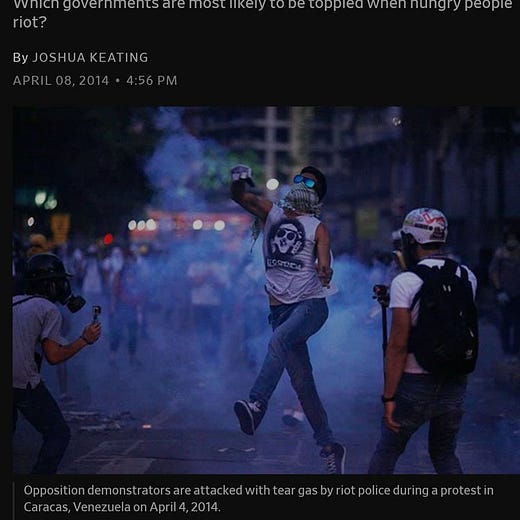
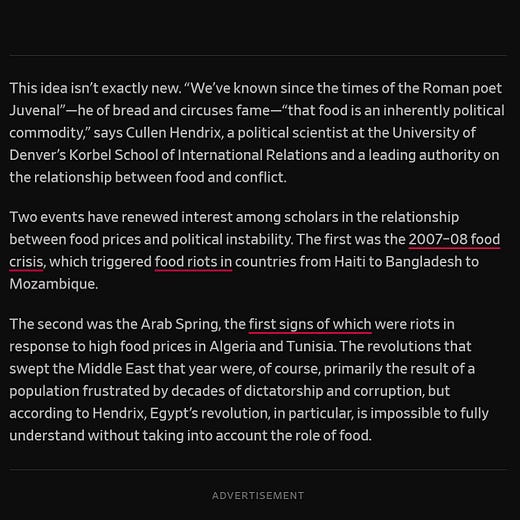

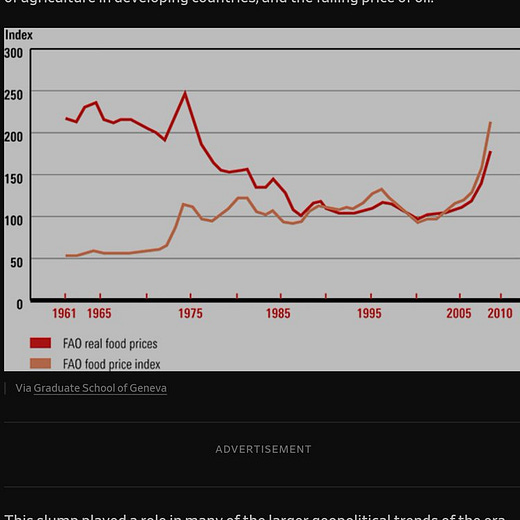
Large equatorial eruptions that carry ash into the medium to higher altitudes are what cause cooling. The hadley cells spread the ash across the equatorial region as their currents gather the ash at lower altitudes and distribute it at the higher altitudes. Conversely, the direction of circulation of mid latitude currents tend to keep the ash located at their respective latitudes.
Equatorial eruptions tend to spread the ash across an area where the sun creates the most heat, resulting in more significant cooling.
Mid latitude eruptions tend to keep the ash localized across an area of less solar heating. The mid latitude regions don't get as much heat from the sun, meaning less cooling.
This is what happened in the 1800s with the year without a summer. That volcano is right on the equator.
Has an eruption recently happened at the equatorial region? Hmmmm.
Look up iceagefarmer.com he's been talking about this for years. We're currently in a Grand Solar Minimum, a mini ice age.